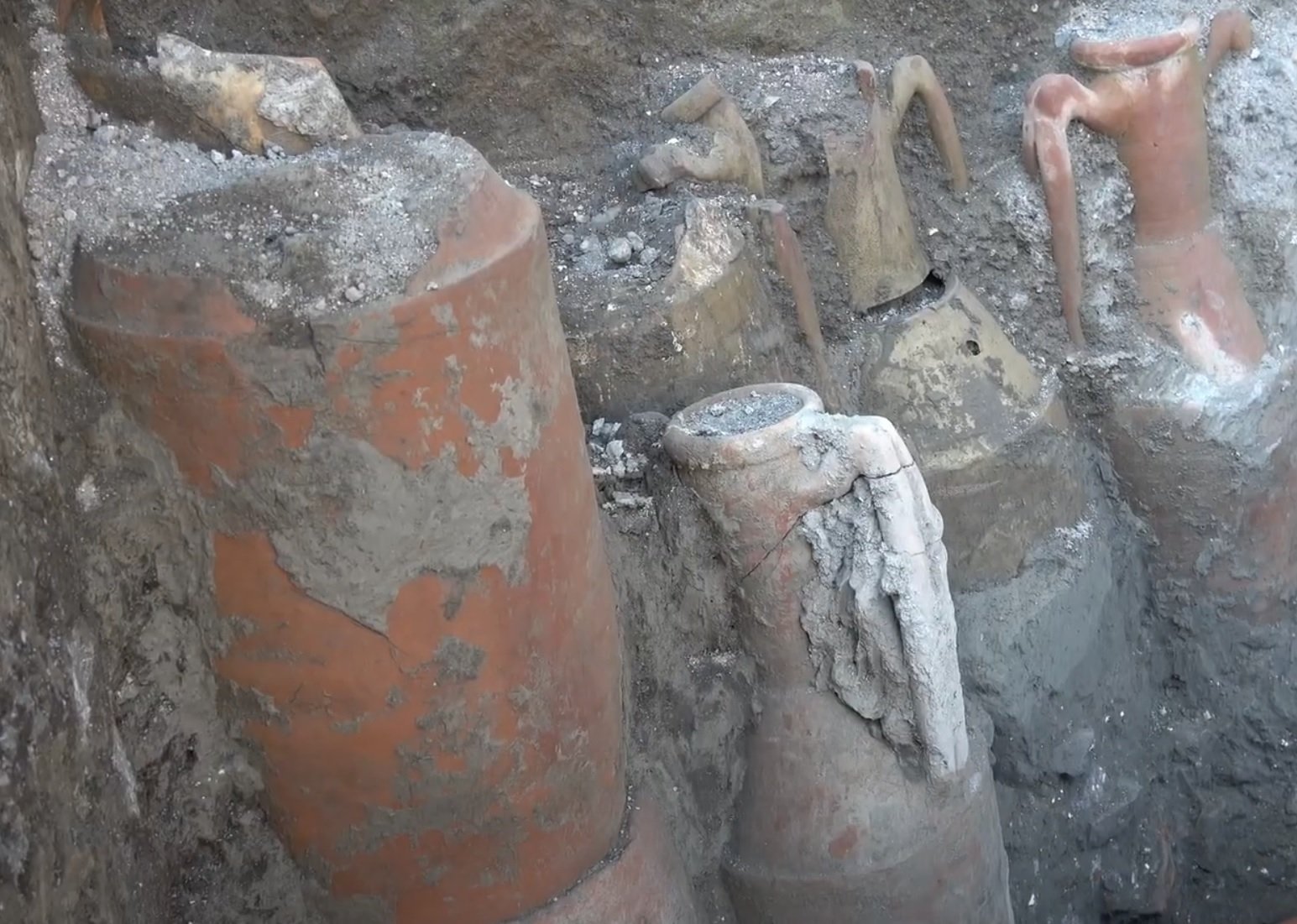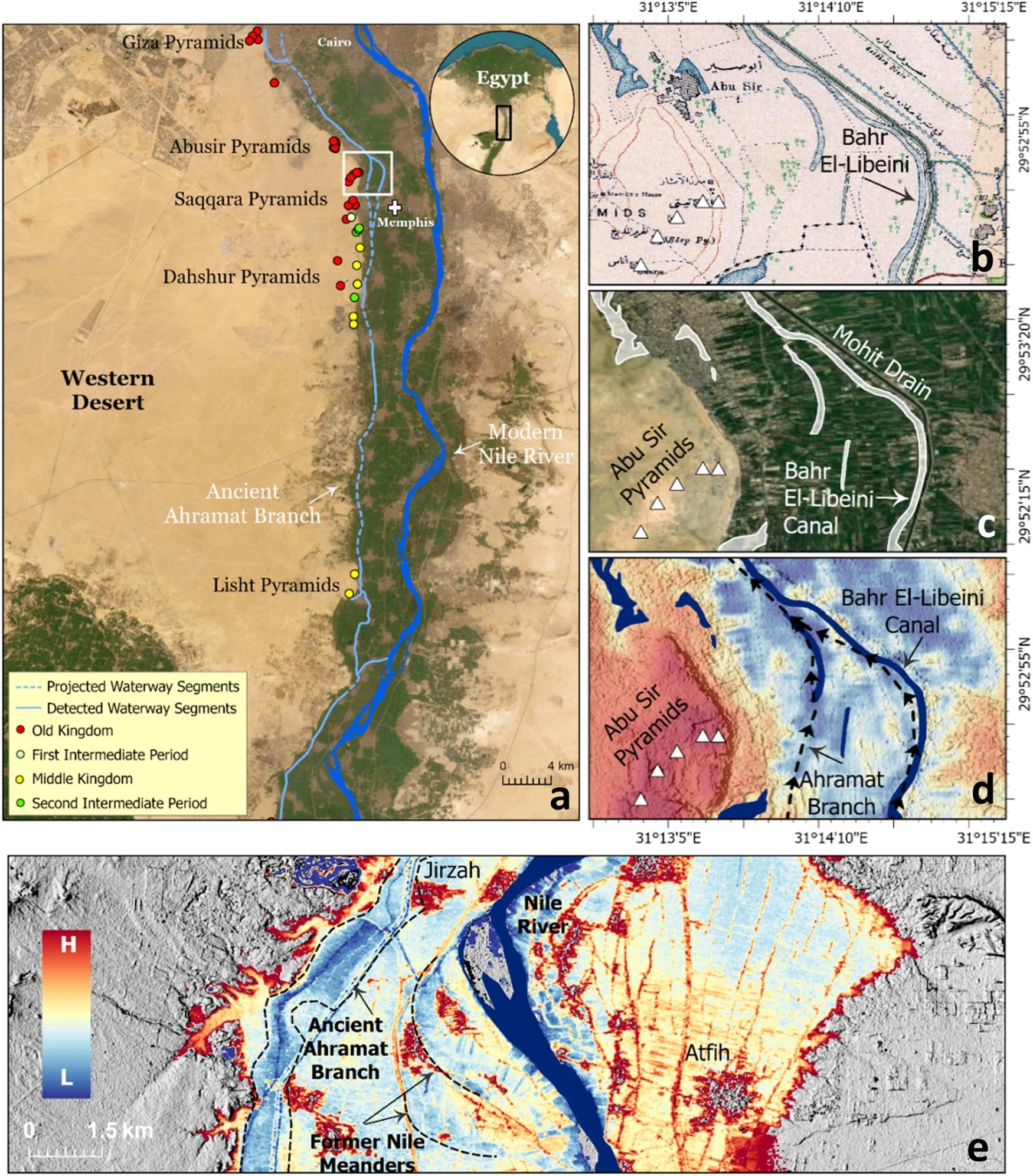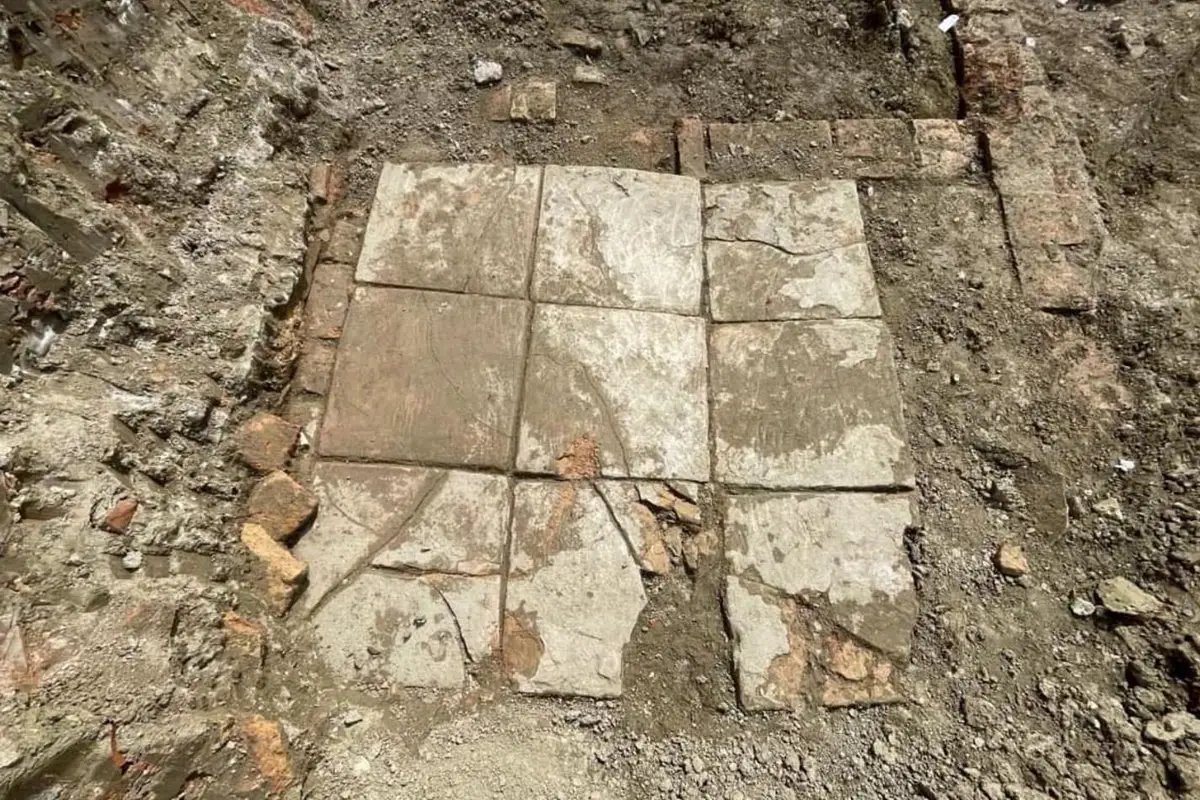Archaeology
Excavation uncovers possible traces of Villa Augustus at Somma Vesuviana

Archaeologists from the University of Tokyo have uncovered possible traces of the Villa of Augustus during excavations at Somma Vesuviana.
Somma Vesuviana is a town and commune in the Metropolitan City of Naples, Italy. During the Roman period, the area was a resort for rich patricians of Rome, or for rich estate owners who constructed large villa complexes.
Excavations in the Nola area during the 1930’s uncovered a large Roman villa interpreted as the Villa of Augustus, which has been subject to ongoing archaeological investigations since 2002.
The villa actually dates from the 2nd century AD, however, more recent studies have discovered traces of a building in a lower context that dates from around the reign of Augustus.
Image Credit : UTokyo Foundation
Gaius Julius Caesar Augustus (born Gaius Octavius), was Roman emperor from 27 BC until his death in AD 14. He is credited as being the founder of the Roman Empire and the Principate system of government which lasted until the Crisis of the Third Century.
According to accounts by Tacitus and Suetonius, Augustus died in a villa located on the northern side of Mount Vesuvius, which was later consecrated as a temple for his Imperial cult.
Archaeologists used radiocarbon dating and a physical and chemical analysis of the volcanic pumice layers covering the earlier building, the results of which confirmed that the building predates the Vesuvian eruption in AD 79 which destroyed Pompeii and Herculaneum.
The eruption released a deadly cloud of super-heated tephra and gases to a height of 33 km, ejecting molten rock, pulverised pumice, and hot ash at 1.5 million tons per second. Excavations within the building have uncovered pieces of walls and roof tiles that collapsed due to pyroclastic flows as the volcanic material travelled down the northern side of the volcano.
According to a press statement by the University of Tokyo: “This suggests that even the northern foothills of Mount Vesuvius, where the effects of the AD 79 eruption were said to have been less severe than the southeastern region of the mountain, were also affected by the eruption with destructive power.”
To further support the supposition of the building being the Villa of Augustus, the team conducted the same physical and chemical dating of volcanic material on adjacent buildings associated with the early villa complex.
Furthermore, radiocarbon dating of charcoal collected from the ruins of a “kiln”-like structure has dated the material to the early 1st century AD. The discovery of 1st century AD amphorae within the ruins indicate that the “kiln”-like structure was later converted into a warehouse before the eruption.
Studies of the 2nd century building has also revealed that it reused architectural features from the earlier building, demonstrating a transition from “disaster” to “reconstruction” in the area around Mount Vesuvius.
Header Image Credit : UTokyo Foundation
Sources : University of Tokyo
This content was originally published on www.heritagedaily.com – © 2023 – HeritageDaily
Archaeology
Groundbreaking study reveals new insights into chosen locations of pyramids’ sites

A groundbreaking study, published in the journal Communications Earth & Environment, has revealed why the largest concentration of pyramids in Egypt were built along a narrow desert strip.
Since the beginning of the Pharaonic era, the Nile River has played a fundamental role in the rapid growth and expansion of the Egyptian civilisation.
The Nile provided sustenance and functioned as the primary mode of transportation for goods and building materials, which explains why most of the main cities of the Egyptian civilisation were built in close proximity to the banks of the Nile and its peripheral branches.
Over the centuries, the primary channel of the Nile shifted laterally, causing these peripheral branches to silt up. As a result, population centres were cut off from the vital resources the river provided.
Image Credit : Eman Ghoneim et al
This is apparent with the pyramids along the Western Desert Plateau, where a majority of the pyramids are concentrated along a narrow desert strip several kilometres from the current primary channel of the Nile.
Using a combination of radar satellite imagery, geophysical data, and deep soil coring, the study has investigated the subsurface structure and sedimentology in the Nile Valley adjacent to the pyramid clusters.
This has revealed an extinct branch of the primary channel called the Ahramat Branch, which was connected to the pyramids of the Old and Middle Kingdoms via causeways and their Valley Temples.
According to the study authors: “The Ahramat Branch played a role in the monuments’ construction and was simultaneously active and used as a transportation waterway for workmen and building materials to the pyramids’ sites.”
The eastward migration and abandonment of the Ahramat Branch could be attributed to gradual movement of the river to the lower-lying adjacent floodplain or tilting of the Nile floodplain toward the northeast as a result of tectonic activity, as well as windblown sand incursion due to the branch’s proximity to the Western Desert Plateau.
Header Image Credit : Eman Ghoneim et al
Sources : Ghoneim, E., Ralph, T.J., Onstine, S. et al. The Egyptian pyramid chain was built along the now abandoned Ahramat Nile Branch. Commun Earth Environ 5, 233 (2024). https://doi.org/10.1038/s43247-024-01379-7
This content was originally published on www.heritagedaily.com – © 2023 – HeritageDaily
Archaeology
Archaeologists find Roman villa with ornate indoor plunge pool

Archaeologists from the National Institute of Cultural Heritage have uncovered a Roman villa with an indoor plunge pool during excavations at the port city of Durrës, Albania.
During antiquity, Durrës was founded by Ancient Greek colonists from Corinth and Corcyra.
The colony emerged into a major trading centre, which during the Roman period was annexed into the expanding territory of the Roman Republic following the conclusion of the Illyrian Wars.
By the 4th century, the city (named Dyrrachium), emerged as the capital of the Roman province of Epirus nova, covering the region of Ancient Epirus.
Image Credit : IKTK
Archaeologists excavating a former residential part of the ancient city have uncovered a high status Roman villa that dates from between the 1st and 4th century AD.
The villa interior contains an indoor pool, richly decorated with frescoes on the walls and mosaic flooring with tiles and inlays of marble, stone, glass and ceramics. Located adjacent to the pool are shallow square basins lined with waterproof mortar, believed to be the remains of an ancient water feature.
Within the northern area of the excavation site, archaeologists found a large brick floor from a thermae, a Roman bath, and further traces of walls from the wider complex.
In the western area, the team discovered fragments of relief stucco that was used to decorate the walls and ceilings of the villa. The reliefs depict anthropomorphic and floral motifs, further indicating the wealth of the villa inhabitants.
According to the archaeologists, the villa was destroyed by an earthquake in the 4th century, corresponding with ancient sources that describe a powerful earthquake causing buildings to collapse and the city defences to crumble.
Header Image Credit : IKTK
Sources : National Institute of Cultural Heritage
This content was originally published on www.heritagedaily.com – © 2023 – HeritageDaily
-

 Ghosts2 years ago
Ghosts2 years agoZozo: The Ouija Board Demon
-

 Space2 years ago
Space2 years agoScientists claim to have found the answer what existed before the Universe
-

 Ghosts2 years ago
Ghosts2 years agoOld Coot of Mount Greylock
-
Archaeology1 year ago
New discoveries at Ekʼ Balam during conservation works
-

 General3 years ago
General3 years agoUC San Francisco engaging in horrifying experiments, organ harvesting of live babies in the name of “science”
